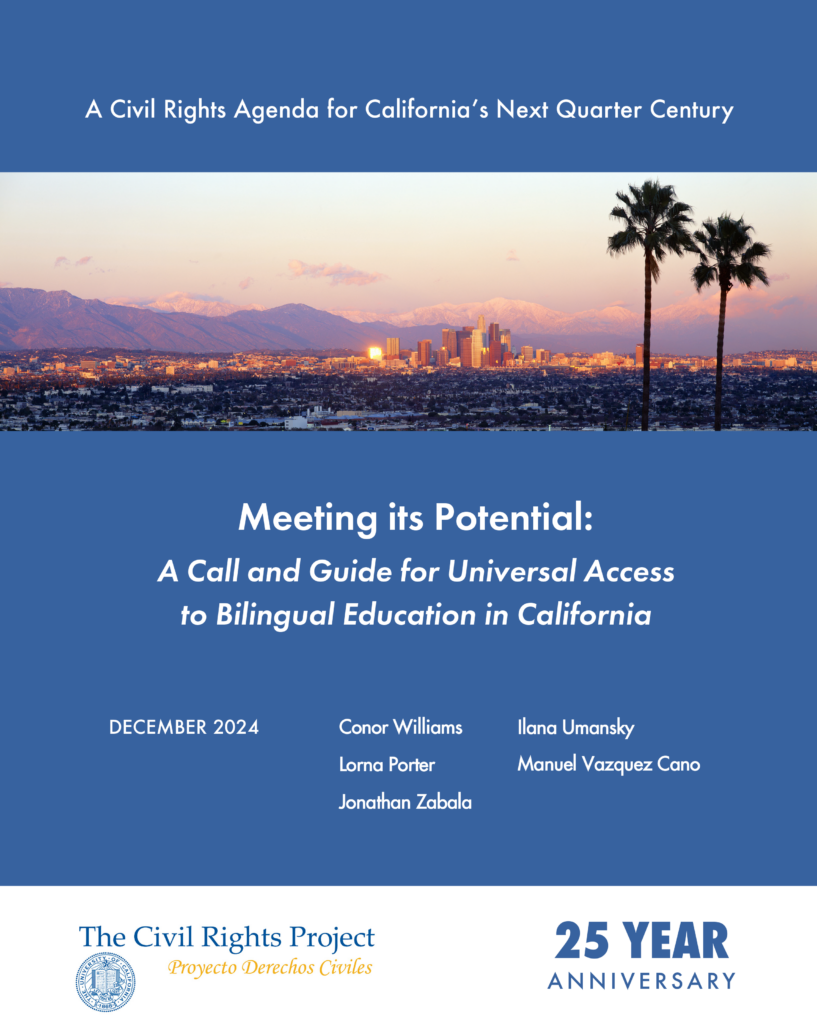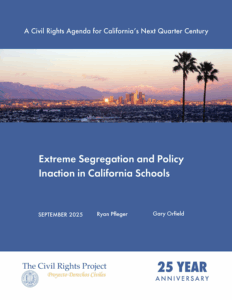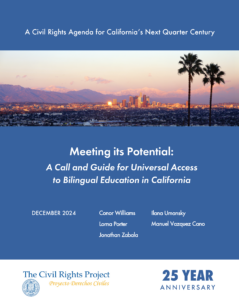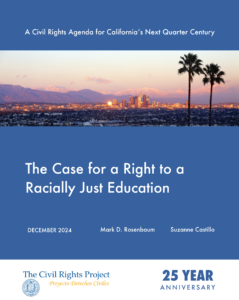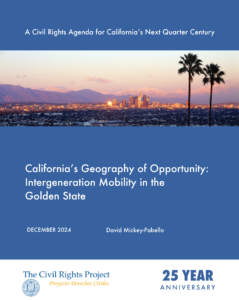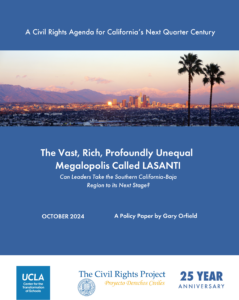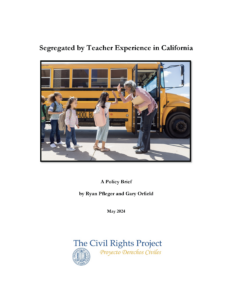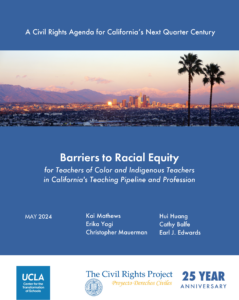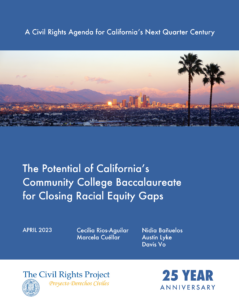Executive Summary
California’s cultural and linguistic diversity are remarkable assets for the state. In particular, bilingualism is linked not only to economic growth, but also to improved health, social empathy, educational attainment, community cohesion, and civic engagement. Harnessing this potential depends upon the educational success of California’s more than one million students classified in K-12 schools as English learners (ELs). Abundant evidence illuminates not only the potential of this talented group of students, but also the danger of them being relegated to a second-class status in school. After nearly twenty years of English-only education, California has made significant strides in growing bilingual education programs, programs such as dual language immersion, maintenance bilingual, and heritage language revitalization, and in doing so has recognized bilingual education’s potential to improve academic and post-schooling outcomes for all students. State initiatives including Global California 2030 and the EL Roadmap both emphasize the importance of bilingual education in preparing California’s diverse student population for a globalized and multilingual future.
However, the state’s history with bilingual education has been complex, marked by periods of both progress and setbacks—and much remains to be done to deliver on these ambitious bilingual promises. This report explores the past and present of bilingual education in California, and then outlines a series of recommendations for making bilingual education the universal standard of service in the state’s K–12 schools and California a national leader in bilingual education and multilingualism.
We organize our recommendations around three areas for growth:
- Expand bilingual instruction in the state, including creating high quality programs in districts across the state that currently do not have them, and supporting the growth and expansion of programs that already exist;
- Invest in efforts to grow the state’s bilingual teacher pipelines in both the long and short term through revitalizing the state’s bilingual teacher credentialing programs and creating and strengthening alternative pathways into the profession through grow-your-own and other programs; and
- Prioritize access, quality, and relevance for the state’s ELs, while also expanding access for other multilingual students and English-only speakers.
Bilingual education has wide-ranging benefits, both for individual students and society as a whole. Research consistently shows that the development of students’ bilingualism enhances cognitive skills such as problem-solving, critical thinking, and creativity.
This report was published as part of a research series, “A Civil Rights Agenda for California’s Next Quarter Century,” in commemoration of the Civil Rights Project’s 25th anniversary.
In compliance with the UC Open Access Policy, this report has been made available on eScholarship: escholarship.org/uc/item/1nb500sd
